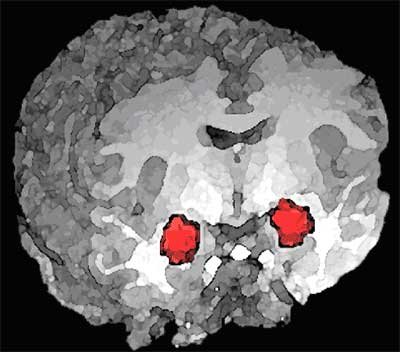Text written in Basque and translated automatically by Elia without any subsequent editing. SEE ORIGINAL
For the brain, terror and fear are not the same
Researchers at Iowa University have shown that brain amygdala does not prescribe a response to all kinds of fears. They have also shown that people who have atrophied tonsil, although they have the ability to feel lost fear, are frightened when they receive signs of danger to their life. Hence it follows that another mechanism hitherto unknown also participates in the mechanism of fear.

Patients with Urbach-Wiethe have been key in the study conducted in Iowa. It is a very rare disease, in which patients are dried and harden the tonsil, so they have no response to terrifying stimuli for others. However, against what everyone expected, they were frightened in the investigation.
In addition to these healthy volunteer patients participated in the experiment. The researchers put a mask on them and gave them 35% air of carbon dioxide to breathe (increased CO2 concentration in the blood causes panic). To their surprise, patients showed a real panic, even greater than healthy volunteers.
Therefore, although until now it was thought that he was not alone responsible for igniting the mechanism of fear. The researchers have expressed their intention to continue working to clarify other mechanisms alien to tonsilliness.
Buletina
Bidali zure helbide elektronikoa eta jaso asteroko buletina zure sarrera-ontzian











